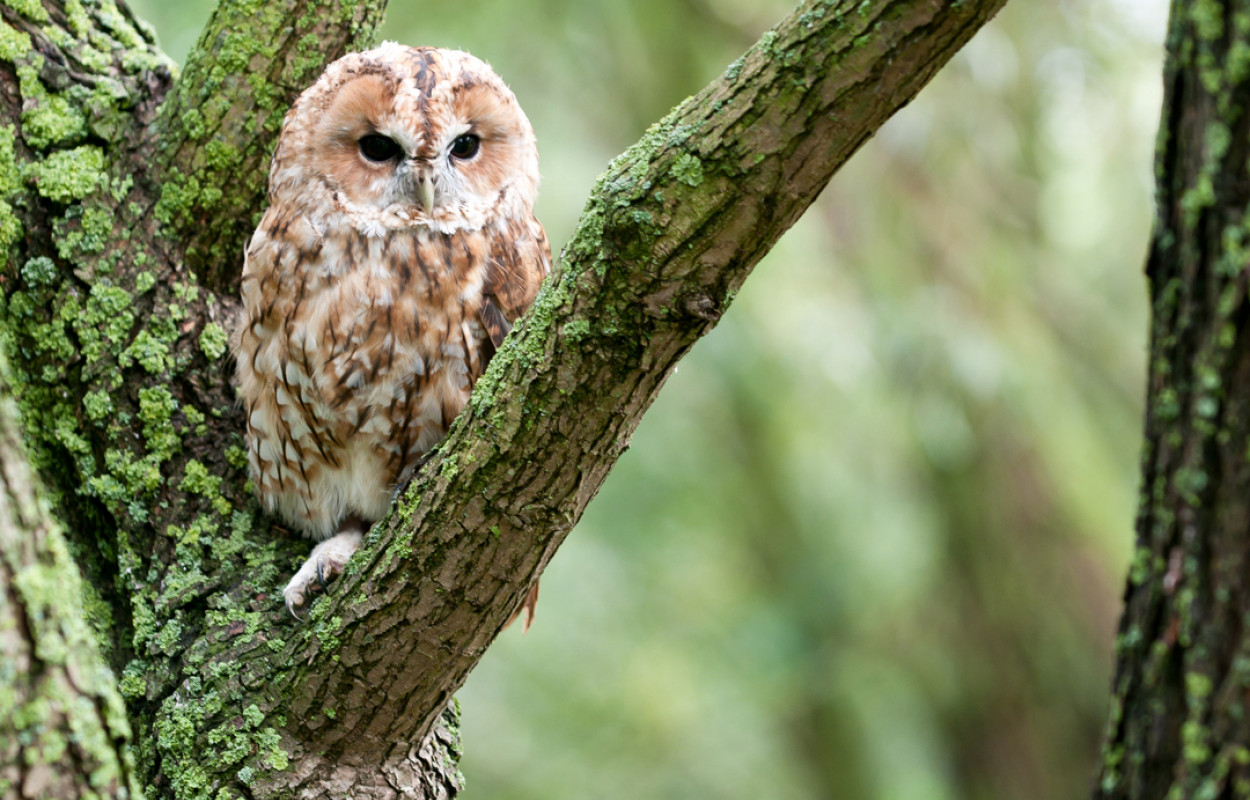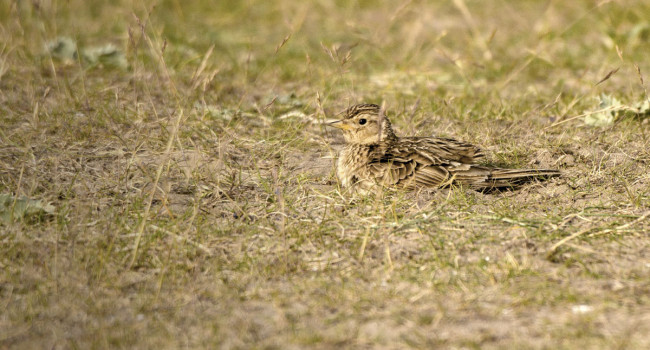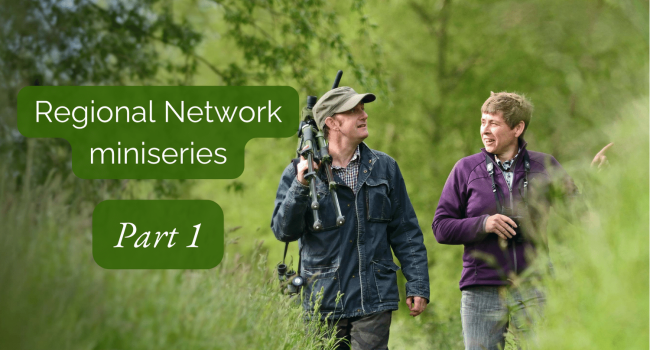Large-scale citizen science survey of a common nocturnal raptor: urbanization and weather conditions influence the occupancy and detectability of the Tawny Owl Strix aluco

Author(s): Hanmer, H.J., Boothby, C., Toms, M.P., Noble, D.G. & Balmer, D.E.
Published: February 2022
Journal: Bird Study
Digital Identifier No. (DOI): /10.1080/00063657.2021.2019188
Prior to this study, most Tawny Owl population data was collected during daylight surveys for other species, or specialist, labour-intensive night-time surveys during the breeding season. The BTO Tawny Owl Calling Survey, however, harnessed the time and skill of thousands of volunteers to shed light on the impact of urbanisation on Tawny Owl populations, and used the data collected to develop the best methods for surveying these nocturnal raptors in the future.
Abstract
Capsule: Tawny Owl Strix aluco site occupancy and detectability are influenced by habitat and environmental variables.
Aims: To determine factors influencing Tawny Owl occupancy and detectability around British homes and gardens using a large-scale citizen science survey across two main survey periods.
Methods: Surveys of 20 min duration were undertaken one evening a week from the homes and gardens of volunteers, for up to 26 weeks between October and March of 2005/2006 and 2018/2019, and analysed primarily using multi-season occupancy modelling.
Results: During two survey periods, more than 9000 sites were surveyed across the breeding range of the Tawny Owl within Britain. The main drivers of occupancy were found to be the extent of broadleaf woodland cover and the degree of urbanisation. Detection probability was influenced by date, time, weather, and moon phase. Using the current method, a minimum of five to six survey visits per site would be required to have 95% confidence over the presence or absence of Tawny Owls at a given site, but it may be possible to optimise the survey method further to increase efficiency by surveying in the autumn or early spring, early after dusk, and on cloudless dry evenings close to the full moon.
Conclusion: The findings indicate that survey methodologies for surveying Tawny Owls can be optimised to increase the efficiency of detection, if present at a site. We highlight the need for further research on the effects of urbanisation on Tawny Owls, particularly with regards to artificial light pollution and its effects on behaviour and settlement, along with the need for greater understanding of Tawny Owl activity budgets, which would aid the interpretation of survey results.
Despite being reasonably common, widespread, and easily identifiable from its vocal behaviour, the trajectory of the Tawny Owl population trend in Britain is poorly understood. There is evidence for an ongoing, but shallow, long-term decline in the breeding population trend since the mid-1980s, though it should be noted that this evidence comes from the BTO/JNCC/RSPB Breeding Bird Survey and its predecessor the Common Birds Census, both of which involve daytime surveys by volunteers. Better information is likely to come from dedicated surveys, carried out at night and during the Tawny Owl’s breeding season, when territorial vocal activity is at its peak.
Such dedicated surveys typically rely on the use of tape playback to elicit responses from territorial birds, a labour-intensive method that can limit survey coverage. Listening-based surveys can also be undertaken using a less structured design, allowing greater flexibility in recording periods within their protocols, and enabling increased coverage and participation by citizen scientists. These less structured surveys often have the disadvantage of being biased towards particular habitats or regions, and so may not be suitable for monitoring population trends. Their use does, however, enable the collection of large quantities of valuable data that can be used to explore patterns at a larger spatial scale. These survey data can then inform our understanding of Tawny Owl occupancy and calling behaviour, as well as guide the design of future surveys, while also offering the chance to engage both new and existing volunteers with active participation in science.
The BTO Tawny Owl Calling Survey was carried out over two separate survey periods (October to March in 2005/06 and 2018/19) in order to explore the drivers of Tawny Owl occupancy and detection probability around our homes and gardens. The study had a particular focus on the impact of urbanisation and also sought to explore changes in occupancy and detection between the two survey periods. Volunteers carried out surveys across each winter period, avoiding evenings that were wet, windy or had poor visibility. They were asked to record whether they heard Tawny Owls calling during the survey period, and to specify whether territorial hooting and/or keewick contact calls were heard. The volunteers also collected data on the amount of cloud cover, which was used alongside environmental data from other sources to identify factors that might influence calling behaviour.
Some 9,452 volunteers took part in the survey in 2018/19 and 3,465 took part in 2005/06, collectively covering sites and delivering 122,117 twenty-minute counts. Overall, Tawny Owls were reported at least once from 86.8% of sites in 2005/06 and 84.3% in 2018/19. When the data are viewed on a weekly basis, Tawny Owls were reported from 52.1% and 61.1% of the completed survey weeks in 2005/06 and 2018/19, respectively. The results of the analyses revealed no change in occupancy between the two survey periods but a slight significant increase in detection probability across all occupied sites in the 2018/19. These results can be used to inform approaches for determining the presence of Tawny Owls at occupied sites, implying that five or six survey visits would be needed within a survey season to determine with 95% confidence whether Tawny Owls are present at a site or not.
Surveys carried out in the autumn and early winter were more likely to detect an owl at occupied sites than those carried out in the middle of winter, but there was an upturn in activity in early spring. Such patterns almost certainly reflect the changing territorial behaviour over this period, with Tawny Owls likely to be more vocal in the autumn due to established adults responding to the settlement of dispersing juveniles, and another increase in vocal activity in the spring likely coinciding with breeding behaviour and pair bonding. Tawny Owls were less vocal on cloudy nights and when it was raining, but more active on nights when the moon was fuller. Examination of the factors influencing whether or not Tawny Owls were present at a site highlighted that the two strongest factors influencing occupancy were the amount of broadleaf woodland cover locally and the amount of artificial light at night, the latter a measure of the degree of urbanisation. Occupancy increased with woodland cover, a not unexpected result, but declined as the degree of urbanisation (and artificial light at night) increased.
The study demonstrates the tremendous value in being able to use citizen scientists to capture data on Tawny Owl calling behaviours at a wide spatial scale. This study used multi-season occupancy modelling to investigate the factors affecting the occurrence of Tawny Owls at a site, and the probability of detection of owls during a survey. The findings help to identify those variables that should be considered when designing a species-specific survey for Tawny Owl, thereby improving survey design, and they also underling that tailoring survey design further towards the behaviour of a species can lead to more efficient monitoring.










Share this page